An industry isn’t built in a day. The current state of promotional products is the result of decades of innovations, phenomena, milestones and tragedies. With this list, the Counselor team has undertaken the ambitious task of identifying the 70 biggest events in the history of promotional products – ranked in order of their influence and impact on the industry. The catch? All the events must have occurred in the last 70 years since Counselor first published. (Well, except for one major exception. You’ll see.)
This list kicks off a full week of content celebrating’s Counselor’s 70th anniversary. There will be contests, interviews and predictions. But first, the events that defined an industry and an era.
70
Fidget Spinners
69
AI
68
Funeral Directors
67
Synanon
66
Tobacco Ban
65
Bobbleheads
64
Stanley
63
Para-Gift Closes
62
International Biz
61
POY Speech
60
ETS Defeats S’well
59
Tariffs
58
Supply Chain
57
Cannabis
56
Fisher Space Pen
55
Gulf War
54
Bicentennial
53
SAAI Show
52
Pharma Ban
51
Excise Tax
50
Marilyn Monroe
49
Franchising
48
Cup Holders
47
Under Armour
46
Hard Goods + Apparel
45
CorpLogoWare
44
Cyrk
43
HALO Bankruptcy
42
DTG Printing
41
Gas Crisis
40
Norwood
39
Product Safety
38
YETI
37
MAGA
36
American Apparel
35
Plastic Bag Bans
34
$1B Distributors
33
Apparel Suppliers
32
Casual Friday
31
Top 20
30
9/11
29
Social Media
28
Bumper Stickers
27
Earth Day
26
Rush Ordering
25
Regional Shows
24
Price Fixing
23
E-Distributors
22
Catalogs
21
ASI Show
20
Ann Morrisey
19
iPhone
18
Private Equity
17
Coffee Mugs
16
Fax Machines
15
K-Studio
14
13
Mass Decoration
12
Amazon
11
Ballpoint Pens
10
Education Day
9
Great Recession
8
Personal Computer
7
China
6
COVID
5
Release of ESP
4
$1B in Sales
3
The Cohn Family
2
SAA Merger
1
Founding of ASI
70. The fidget spinner fad (2017)

The highly compulsive spinner wasn’t just Counselor’s Product of the Year. It was a national craze that had distributors falling over themselves to fulfill as many orders as they could for the staggeringly popular item. Spinners are still around, but its contribution to the lexicon endures in the form of “fidgets” – a collection of evolving (and brandable) products that must be picked up and played with, particularly during Zoom calls.
< >69. AI promises to change the world (2023)

The AI overlords who read this entry in 2124 are going to have a good laugh. The potential of generative AI is massive, and if we were to update this list in five or 10 years’ time, no doubt AI would be much higher. For now, its impact on the industry has been limited, and so we acknowledge AI near the end of our list as it may cast a very long shadow.
< >68. Florida funeral directors ban giveaways (1959)

Rule 712 of the Florida State Board of Funeral Directors and Embalmers outlawed “any advertising whatsoever” except for a “dignified professional card in the local newspaper” to announce staff or address changes. The immediate impact of banning promotional products was limited, but it set the precedent for entire industries (including tobacco and pharma) to crack down on promo as unessential or dangerously influential.
< >67. A cult owns a distributorship (1964)

File this one under “Truth is stranger than fiction.” Ostensibly a drug rehabilitation program, Synanon evolved during the 1970s into a notorious cult that perpetrated numerous abuses and criminal acts, including infamously placing a rattlesnake in the mailbox of an attorney who sued the Southern California group. It also ran many ventures, including a thriving distributor business (Synanon Advertising Gifts & Premiums, or ADGAP) that made Counselor’s first-ever Top 20 list in 1982 with $13 million in sales – and remained a fixture on the list for two more decades.
< >66. Tobacco companies banned from using promo (1998)

As part of a massive settlement with state attorneys general to repay tobacco-related Medicaid costs, tobacco companies gave up the right to use promotional products. At the time it threatened to rip a massive hole through the promo industry, with the FTC estimating that tobacco companies spent $854 million in imprinted merch in 1994. Instead, industry sales never really took a hit, as the social mores regarding smoking quickly shifted.
< >65. The unlikely resurgence of bobbleheads (1999)
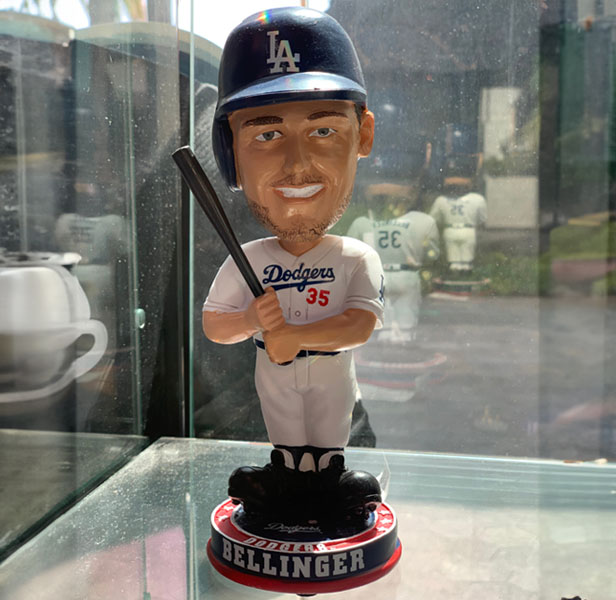
Bobbleheads have been around for decades and enjoyed a brief but vivid run of success in the mid-20th century, but seemed consigned to be a relic of the past. That changed on May 9, 1999, when the San Francisco Giants gave out 25,000 bobbleheads of baseball great Willie Mays. The giveaway sparked an unbelievable comeback, making bobbleheads a staple of stadium giveaways and turning it into a pop culture phenomenon. If you agree, nod your head and smile.
< >64. Stanley goes viral (2023)
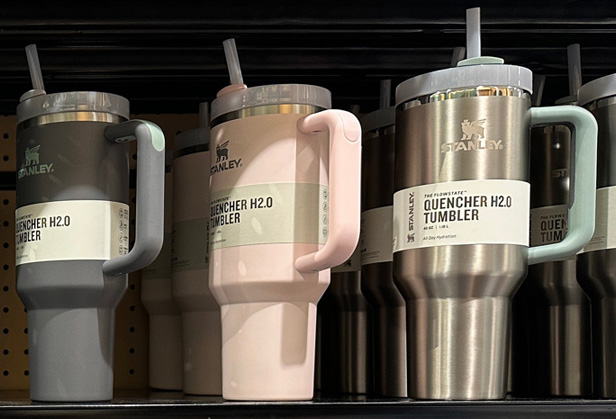
A heritage brand with a storied history becomes the object of affection for a cadre of TikTok influencers, who ignite a craze that turn a tumbler into the “It Gift” of 2023 and cause consumers to raid big box stores and camp out for days to land limited-edition styles. Did we miss anything?
< >63. The shocking closing of Para-Gift (1977)
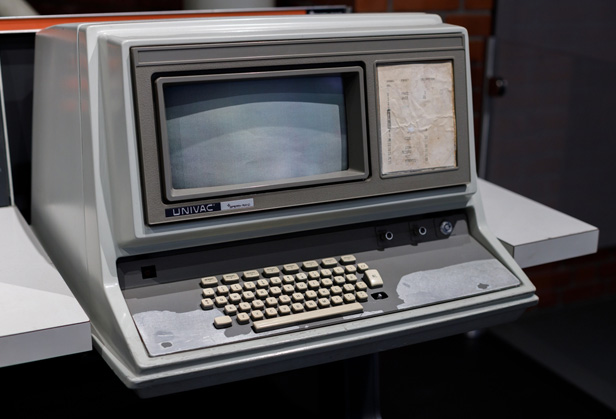
One of the largest and most well-respected distributors at the time, Para-Gift went out of business just months after a big-time merger. Company leaders blamed a computer system that prevented the company from having accurate financial information for 2½ years. Stunning for the time – and sadly not the last time a high-flying promo company flamed out.
< >62. Founding of IPPAG (1965)
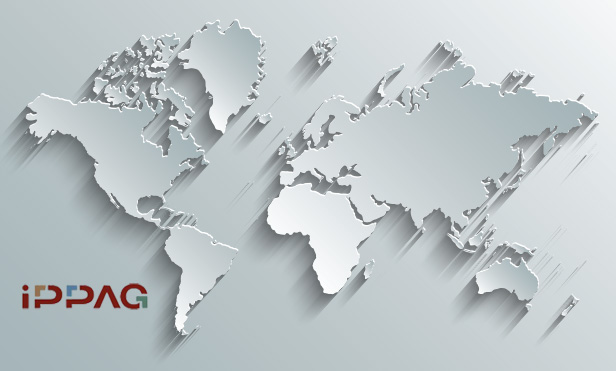
The global reach of the promo industry has its roots in a small handful of people and organizations – perhaps most prominently the International Partnership for Premiums and Gifts (IPPAG). A collective of companies around the world, IPPAG helped grease the skids for international business through tireless networking, idea sharing and goodwill ambassadorship.
< >61. Ira Neaman’s Person of the Year speech (2003)
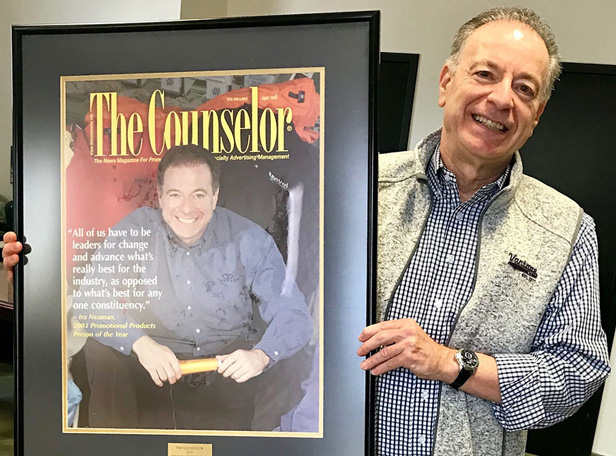
Ignoring the customary platitudes that often dot acceptance speeches, Ira Neaman, the owner of Top 40 supplier Vantage Apparel (asi/93390) grabbed attention at the 2003 Counselor Awards, urging the industry to not ignore the Asia-centric shift and charging both the attendees and ASI to take steps to restore promo’s luster. Neaman’s speech was the subject of much discussion, but two decades later, much of his assessment still holds true.
< >60. ETS defeats S’well in court (2018)

Promo has long harbored an inferiority complex with retail, but the relationship took an ugly turn when S’well hit industry drinkware stalwart ETS Express (asi/51197) with a trademark infringement lawsuit. Then-ETS CEO Sharon Eyal didn’t back down though, and the company scored not only a victory in court, but made a statement that the promo industry won’t be pushed around.
< >59. Trump levies tariffs against China (2018)
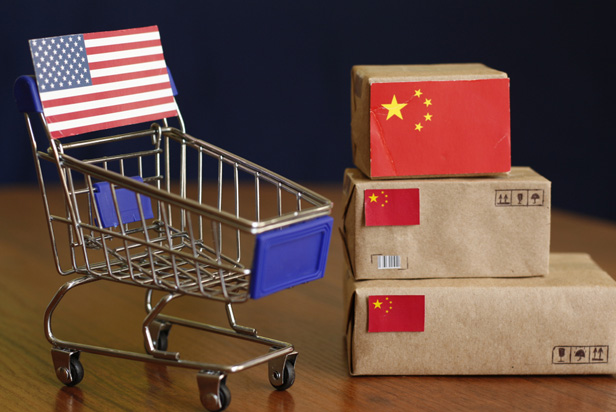
Speaking of overseas reliance …. President Trump’s action against China put the fear of God into the promo industry as it braced for skyrocketing price increases on the reams of products it sourced from the country. The aftermath was more complicated: a bump in prices that tied into post-pandemic supply chain pressures, but also strained margins on suppliers who ate some of the added costs. The surprising fact: Six years later, the tariffs are still in place – with no end in sight.
< >58. Pandemic supply chain fallout wreaks havoc (2021)

Perhaps a number of years from now, the incredible sourcing turmoil will be just a footnote in the story of the COVID-19 pandemic. But for those promo professionals who lived it, the upheaval turned the simplest act of ordering products into a daily migraine. It also continues to force the industry to re-examine its reliance on overseas, just-in-time sourcing and (maybe?) pursue a different path.
< >57. California legalizes medicinal cannabis (1996)

Counselor was writing about the potential for marijuana promo products way back in 1977. But it was California’s legalization nearly three decades ago that initiated a larger shift in government perceptions (nearly half the states today have legalized recreational use of cannabis) and opened up a major new market that’s only going to grow in the decades ahead.
< >56. Fisher Space Pen takes to the skies (1968)
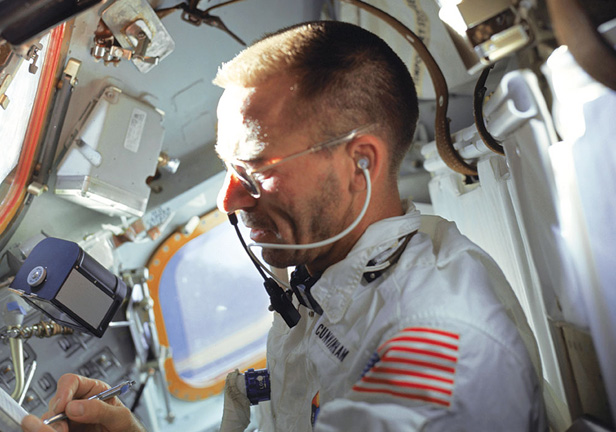
The Apollo missions were remarkable achievements of human ingenuity, but the pen used by the astronauts was itself no small feat. The subject of hundreds of experiments before it was perfected, the Fisher Space Pen (created by inventor Paul C. Fisher) featured a pressurized cartridge that worked in zero gravity, and was first used in space in 1968 on Apollo 7. The Fisher Space Pen transcends the perception of “useless junk” and proved that promo can be an essential part of history – a piece of which anybody can own.
< >55. Promo lends support to troops in Gulf War (1991)

When Operation Desert Storm commenced in January 1991, that year’s PPAI Winter Show was flooded with flags, yellow ribbons and images of Saddam Hussein. But the industry held back from diving fully into Gulf War products that year, based on doubts of how long the war would last and the chance of being stuck with inventory.
< >54. Bicentennial promises a bang, leaves with a whimper (1976)

What promised to be a windfall of red-white-and-blue products for America’s 200th birthday instead turned into a quagmire under the confusing licensing guidelines of the American Revolution Bicentennial Administration (ARBA). Distributors also overestimated buyer enthusiasm, leaving them with excess inventory and sales results far below what they projected.
< >53. The SAAI Show leaves Chicago … and then Dallas (1976 and 2003)

Nothing got the industry more riled up (and spilled more ink on the pages of Counselor back in the day) as where the SAAI’s national show should have been held. (SAAI is now known as PPAI.) The move from Chicago to the association’s hometown of Dallas in 1976 was the source of much discussion, and the episode repeated a few decades later when PPAI Expo moved to Las Vegas.
< >52. Pharma industry bans most promotional products (2009)

Once a major source of industry sales, the relevance of the pharmaceutical market to promo evaporated when the pharma industry’s trade group banned all non-educational promo products. The effects have been long-lasting but with no relief: the pharma industry doesn’t rate as one of the 17 largest verticals for promo products as measured in Counselor’s State of the Industry.
< >51. Gellman Decision erases excise tax for distributors (1958)
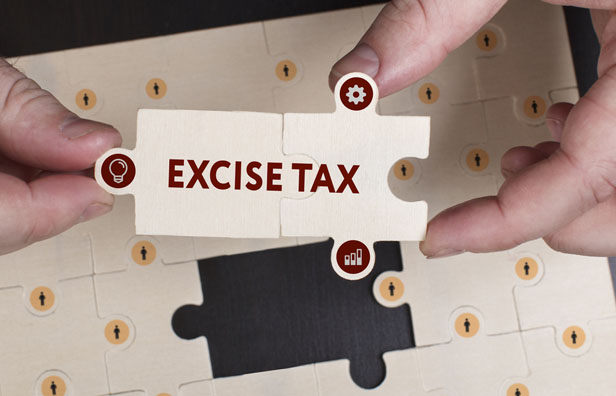
In a major victory for “jobbers” (as distributors were previously known as) in the early days of the industry, a lawsuit by Nathan Gellman of the Gellman Brothers company found that the IRS was levying unnecessary excise taxes on the sales of premiums and business gifts. What came to be known as the “Gellman Decision,” the winning appeal in Federal district court in 1958 classified ad specialty sales as wholesale instead of retail, and helped carve the special profitable lane that the promo industry has occupied for decades.
< >50. Marilyn Monroe helps sell millions of calendars (1952)

Calendars proved to be one of the first popular promo items, and one type of calendar in particular thrived during World War II and after: the pin-up calendar. The defining sex symbol of her time, Marilyn Monroe graced millions of calendars sold during the 1950s, and generated a bonanza for distributors in the earlier days of the profession.
< >49. Franchising finds promo (1994)

Though entities like the old direct houses approximated the model, for decades the promo industry had proven resistant to outright franchising. That changed in 1994 when brothers Dan and Kurt Carlson created now-Top 40 distributor Adventures in Advertising (AIA, asi/109480) and signed on hundreds of distributors, and Greg Muzzillo expanded his successful business forms company Proforma (asi/300094) into promo. (Proforma is now a Top 40 distributor that ranked fifth in 2022 industry sales.) In addition to other franchises within the industry today, distributor organizations emerged to offer back-end support while their affiliates focused on sales.
< >48. Cup holders come standard on first minivan (1983)

It’s hard to imagine now, but there was a time when car owners were installing aftermarket cup holders for their travel mugs. That changed in the early ’80s when Chrysler invented the minivan – and equipped each one with a pair of cupholders. Beyond being an incredible measure of convenience, it solidified the status of drinkware as the ultimate on-the-go accessory and paved the way for the $2.5 billion in sales that the category sees today.
< >47. Plank launches Under Armour (1996)

A former football player at the University of Maryland, Kevin Plank got tired of his practice shirts getting soaking wet. The stretchy prototype shirt he developed launched a new category, catapulted his nascent company to massive retail success and has had a seismic influence on the promo apparel market today, where practically every garment features “performance” capabilities. Moreover, for years Under Armour was a white whale in the industry until alphabroder (asi/34063) began offering the brand starting in 2015.
< >46. PCNA combines hard goods and apparel (2011)
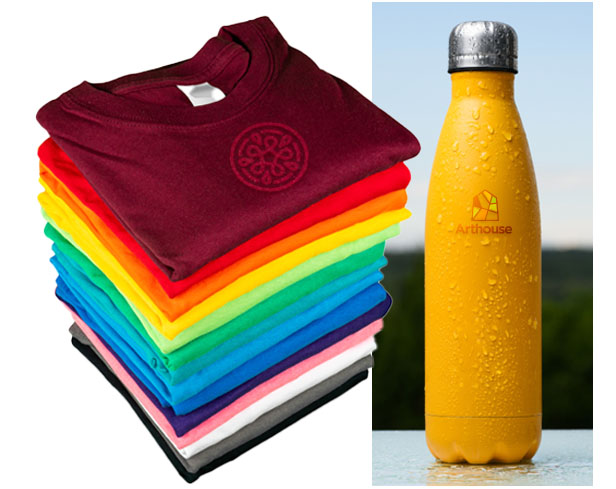
Though not the first major supplier to breach the apparel-hard goods divide (Norwood dallied with apparel for only 10 months in 2001), PCNA (asi/66887) stuck the landing with its acquisition of Trimark Sportswear in 2011. Today, several Top 40 suppliers offer both apparel and hard goods, meeting demand for kitting synergies and pulling buyers toward a one-stop solution.
< >45. The rapid demise of CorpLogoWare (2008)
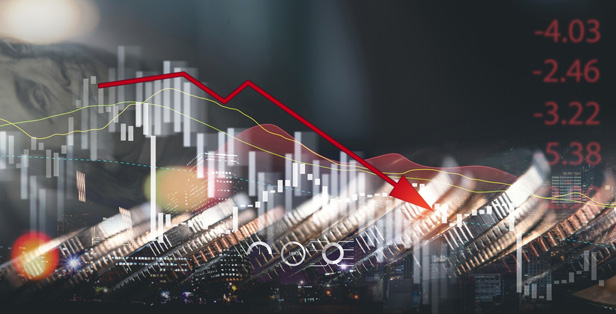
A Top 40 distributor with $32 million in sales in 2006, CorpLogoWare had closed its doors by March 2008 when it had vastly overextended itself and owed millions to suppliers and creditors. “I pressed too far too fast and I’m to blame for that,” President and CEO Jack Levine told Counselor that spring. Eight days after the company shut down, Levine died of an apparent heart attack.
< >44. Cyrk approaches $1B (1997)
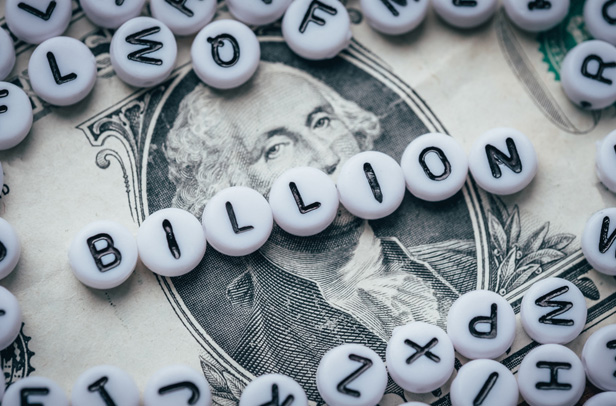
A giant at the time, Cyrk was a publicly traded distributor with massively lucrative accounts with Philip Morris, McDonald’s and Pepsi. Its merger with Los Angeles agency Simon Marketing in 1997 temporarily created a super-distributor with revenue that approached $1 billion. The good times didn’t last as the company overextended itself and eventually sold its promo business for a fraction of the height of its worth.
< >43. HALO files for bankruptcy (2001)
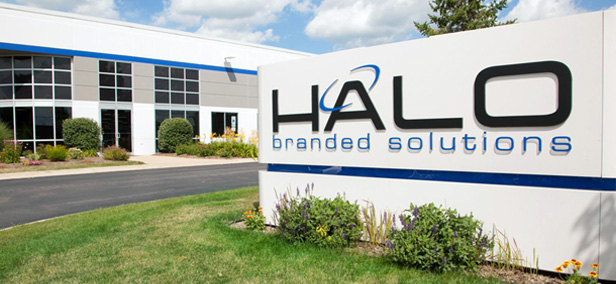
The Century 21 of promotional products. That was the vision of Top 40 distributor HALO (asi/356000) founder Lou Weisbach when he took the company public in 1992, and followed it with aggressive growth strategies that included sponsoring the Chicago Bulls. But the company fell short of its ambitions to reach $1 billion by 2000 and entered a downward spiral that had its roots in the distributor’s bold $240 million acquisition of Starbelly.com. But instead of being the beginning of the end, the bankruptcy was a needed restart for the distributor, which under the leadership of two-time Person of the Year Marc Simon has ballooned into a billion-dollar behemoth.
< >42. DTG printing introduced to the U.S. (2004)

Launched in the U.S. two decades ago by a trio of companies (Mimaki, U.S. Screen and Kornit), the ingenious adaptation of an inkjet printer for T-shirts – hence the name “direct to garment,” or DTG – shook up the world of apparel decoration. It’s contributed to today’s proliferation of short-run, low-minimum fulfillment models and been part of the wave of digital technology that continues to upend what’s possible with branding.
< >41. OPEC issues an oil embargo against the U.S. (1973)
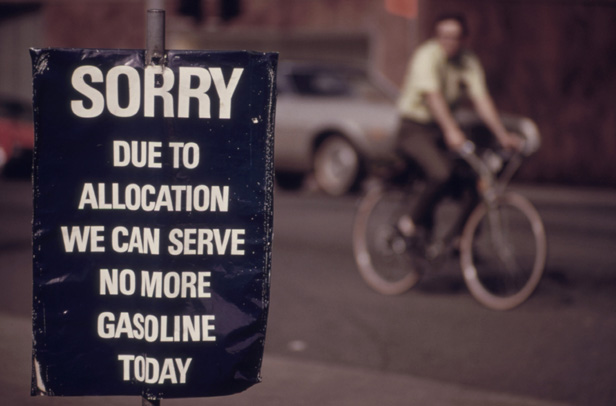
Yes, many of you remember the long lines at the gas station. But the energy crisis of the 1970s sent a wave of panic through the ad specialty industry, stoking fears that the availability of ultra-popular plastic and vinyl products (not to mention decorating inks and apparel) would disappear. The sourcing crisis of recent vintage is another example of how precariously reliant the promo products industry is to its supply chain and raw materials.
< >40. Norwood goes on acquisition spree (late ’90s)

The ’90s were a time when a select group of distributors and suppliers made aggressive moves in a bid for industry domination. On the supplier side, Norwood made 12 acquisitions in the decade to become the industry’s “first super-conglomerate” (as Counselor wrote in 2004). The company also captured headlines when it went public in 1993, only to shift back to private ownership five years later. In 2009 Norwood was acquired by BIC Graphic USA, now known as Top 40 supplier Koozie Group (asi/40480).
< >39. CPSIA creates a compliance nightmare (2008)

Written into law after a storm of concern regarding lead and phthalates in children’s products, The Consumer Product Safety Improvement Act put the promo industry on high alert for years, with fears that one bad batch of products could lead to millions of dollars in fines. The uproar from distributors and suppliers in the years since has died down, but the regulations are still in place.
< >38. The Rise of YETI (2015)

There’s only one word needed to explain the current drinkware renaissance happening in promo: YETI. Though founded in 2006, the brand took off nearly a decade later, raising consumer’s expectations about what a simple tumbler can do – and how much they’re willing to pay for it.
< >37. MAGA hats upend the presidential election (2016)
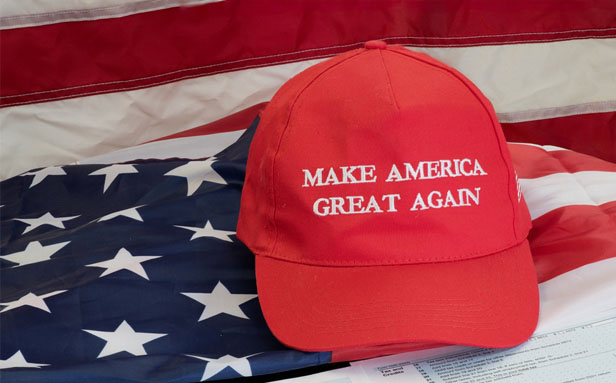
“I Like Ike” buttons and bumper stickers may have been the first viral political swag, but Donald Trump’s stunning 2016 victory was a ringing endorsement for the power of promo. Ignoring the playbook of other candidates who spent wildly on TV ads and other mediums, Trump poured millions into campaign promotional products. It worked – the Republican’s signature red “Make America Great Again” ballcaps became the symbol of the election.
< >36. Downfall of American Apparel (2017)

For a stretch in the aughts there was no bigger promo success than American Apparel. Founder Dov Charney ignored convention and tore up the existing rules for marketing, manufacturing and style. A wealth of troubles led to multiple bankruptcies, Charney’s ouster and the auctioning of the company to Gildan (asi/56842). As the Counselor cover that year proclaimed, it was the “End of an Original.”
< >35. San Francisco bans plastic bags (2007)

The deluge of reusable shopping totes (everyone by now has a few dozen) started here, with the first bag ban of its kind in the U.S. Since then, 12 states and 500 cities have banned plastic bags. Often left unsaid is the pivotal role these bans played in getting the promo industry – and society at large – to wholly embrace the idea of sustainability.
< >34. 4imprint/HALO reach $1 billion (2022)
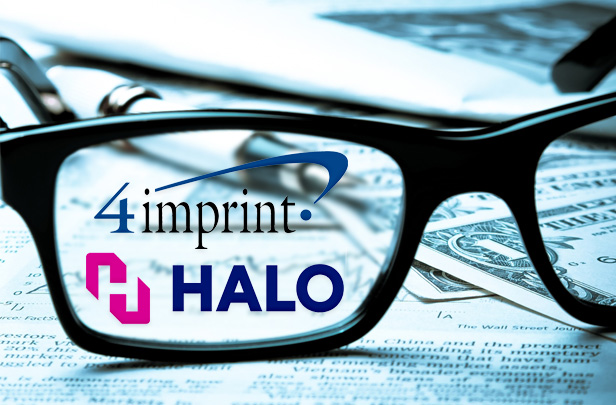
The industry reaching $1 billion in sales during the '70s was a seminal moment, but this was pretty noteworthy as well. Promo’s two largest distributors both reached the mark in 2022, and it was the culmination of numerous industry storylines: HALO’s successful recovery from bankruptcy, the advancing pace of M&A consolidation, and, through the accomplishments of Top 40 distributor 4imprint (asi/197045), an exclamation point on the promised revolutionary effect of the internet.
< >33. The big three of apparel suppliers emerges (2010s)
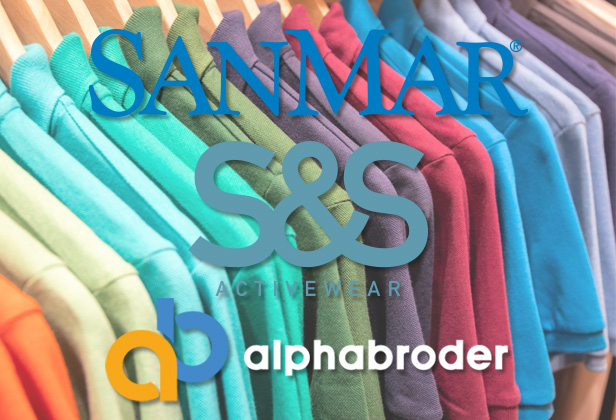
Once a fractured marketplace of hundreds of players, the apparel supplier side has shifted in the 21st century to a handful of colossal entities. By revenue, three in particular – with a combined $7.5 billion in 2022 promo sales – stand out: SanMar (asi/84863), S&S Activewear (asi/84358) and alphabroder (asi/34063). Both M&A and organic growth have allowed these companies to reshape the very apex of the Top 40, and push the promo industry to an increasingly consolidated future.
< >32. Hawaii adopts “Aloha Fridays” (1966)

A ploy by the Hawaiian Fashion Guild to support the state’s garment industry, Aloha Fridays allowed employees in the state to dress down at the end of the week. The concept next spread to California, and by the 1990s “Casual Friday” was a certified phenomenon across the U.S. As businesses relaxed their dress codes, promo businesses greatly benefited, both by selling the casual styles that people wore to work more regularly, and then branding those clothes as it became the modern business uniform.
31. Counselor releases the Top 20 (1982)
Our magazine had published sales figures for the largest companies in the industry by sales prior to 1982. But by doing so on an annual basis in an established format, it mapped out the competitive landscape for the entire promo industry, and gave both distributors and suppliers a benchmark they can measure themselves against. By 2001, the list had expanded to the Top 40 lists for distributors and suppliers, where it has remained ever since.
< >30. 9/11 shakes the country to its core (2001)
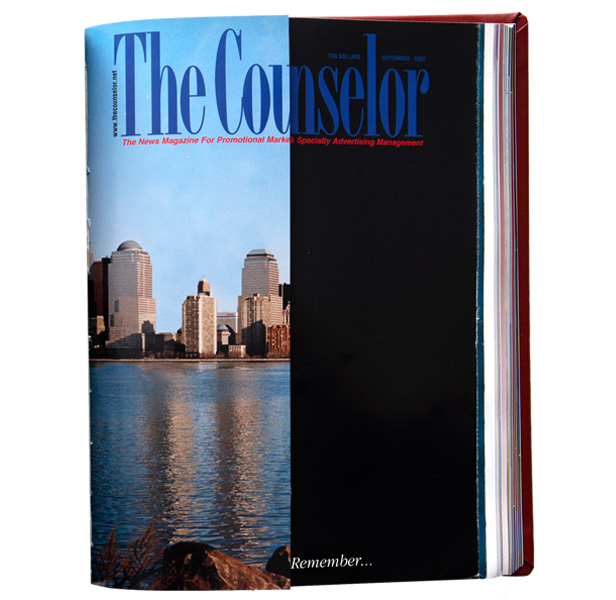
Admittedly other major moments had a greater impact on how industry leaders run their promo businesses. But one of the saddest days in American history revealed the beating heart within promo, as companies raised hundreds of thousands of dollars, delivered patriotic products and rallied together to help a wounded country get to its feet.
< >29. Mark Zuckerberg starts “The Facebook” (2004)
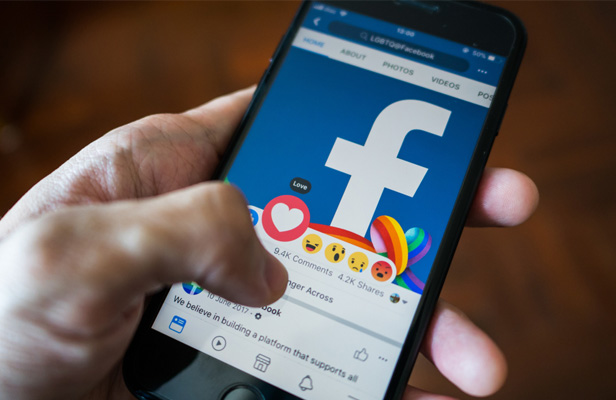
What, you were thinking MySpace? Nine out 10 Americans are on social media, and what started out as a cheeky way to share photos or “poke” someone has become a robust eco-system of platforms (including LinkedIn) for businesses to make connections, prospect for clients and build a loyal fanbase.
< >28. The bumper sticker takes off (1952)

This ubiquitous promo product was invented when screen printer Forrest P. Gill – founder of Top 40 supplier Gill-line (asi/56950) – devised a way to use his post-WWII excess of self-adhesive paper. Popular from the start, bumper stickers reached a new level thanks to their widespread use in the 1952 presidential election between Dwight Eisenhower and Adlai Stevenson. ("I Like Ike" was a major hit on buttons as well.) Honk if you love bumper stickers.
< >27. Millions celebrate the first Earth Day (1970)
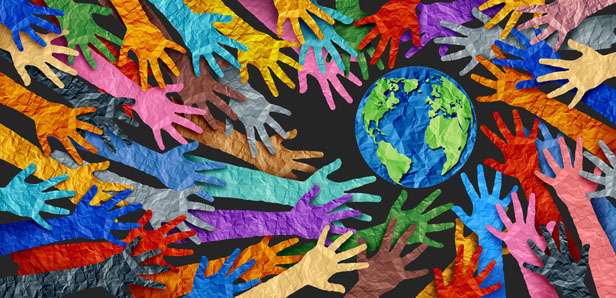
It’s not easy to trace a single flashpoint for the sustainability movement (notice that we didn’t say trend). Still, the first Earth Day – when 20 million people gathered across the U.S. on April 22, 1970 – served as the environmental movement’s official coming-out party and was the wake-up call for people to take better care of our planet.
< >26. Bullet Line ushers in rush ordering (1980)

The “speed” of a promo order used to be measured in weeks and months. Today, the largest suppliers typically offer 24-hour rush shipping. What changed? Technology, sure. But in truth it was a pair of entrepreneurs – Jeff Kramer & Bill Rosen – who permanently redefined buyer expectations with their company, supplier Sun Manufacturing, when they launched 3-day turnaround under the name “Bullet Line.” Their premise that buyers would pay a premium for last-minute orders permanently redefined the pace at which the industry operates.
< >25. The creation of regional shows (1960s)
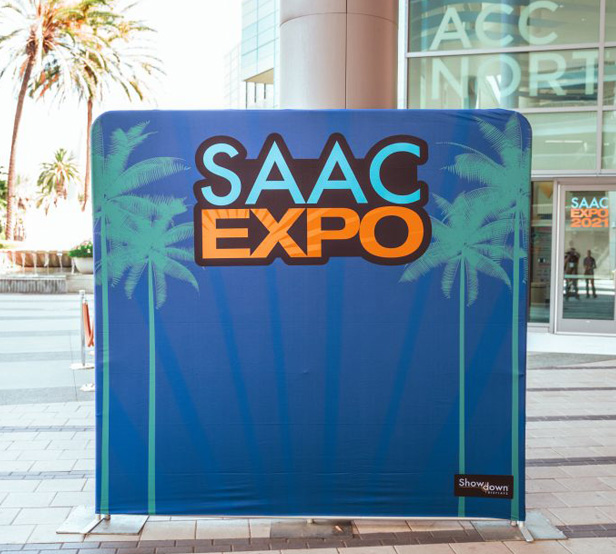
Pinning down the first regional promo trade show is difficult. But while suppliers feared at the time that an expanding show calendar would run them ragged, the local shows helped turbo-charge networking and product knowledge for a wide swath of distributors – a trickle-down effect that helped grow industry sales.
< >24. ASNA charged with price fixing (1952)

As the editors of Counselor wrote way back when, it was a bombshell: the FTC ruled that ASNA (the long-standing association of the time) was unlawfully restraining trade and conspiring to eliminate price competition. ASNA vigorously fought the charges, and while 15 of the 18 charges were dismissed, it ultimately lost its appeal of the remaining three. A relatively closed industry then, the landscape would be different a decade later after ASNA and its competing counterpart the Guild merged to form a single industry association which is known today as PPAI.
< >23. ‘E-Distributors’ arrive on the scene (Late 1990s)
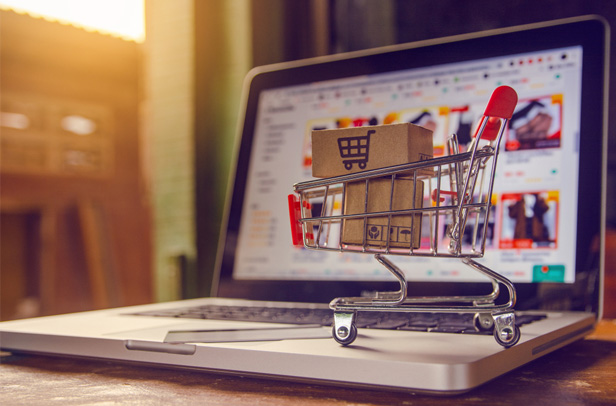
As the dot-come craze took off, there emerged a distinct breed that threatened to shake the very foundation of the industry: e-distributors. With a model built exclusively on online sales, the presence of these entities ginned up fears that margins would be slashed as the industry's pricing data became exposed. (Another rampant fear of the time: suppliers would cut out distributors and sell direct.) But instead of replacing the traditional distributor, the vast majority of companies today have blended an online presence with real-world relationship-building. In a sense, almost every company is an “e-distributor.”
< >22. First cooperative catalog offered to distributors (1955)
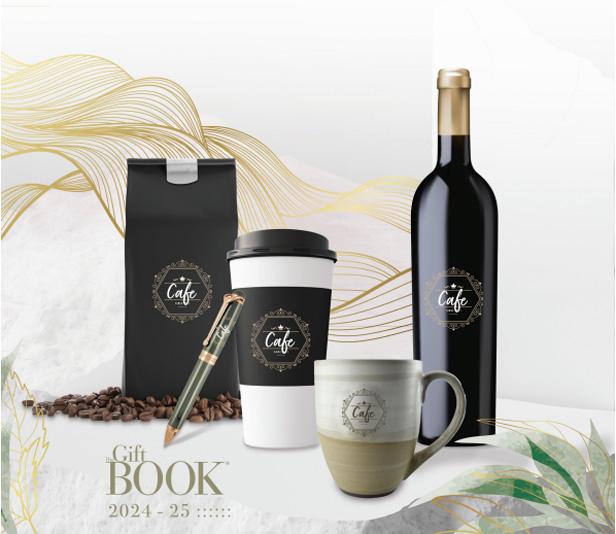
It’s easy to look back now at catalogs and herald their long history of success in generating sales. But when 150,000 copies of the first ad specialty cooperative catalog – featuring products from a variety of suppliers – was printed, published and sent to 225 distributors, it was a key turning point. A year later, ASI started publishing its Consolidated Catalog – a version of which (The Gift Book) is still in circulation.
< >21. ASI re-enters the trade show business (1998)
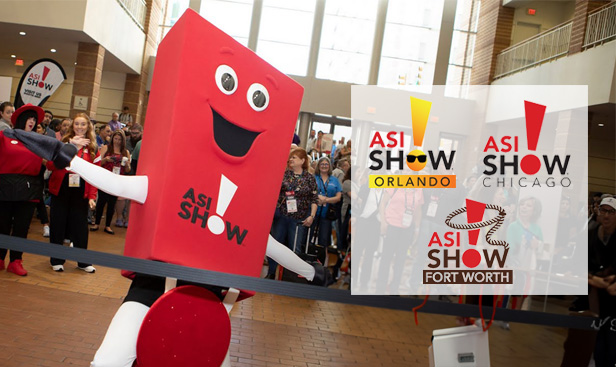
Little-known fact: ASI hosted trade shows in the early days of the company. Still, to most, the Las Vegas show in the summer of ’98 represented ASI’s first foray into trade shows – a seismic event for the industry’s hallowed show calendar. Today, ASI hosts three major shows and several hosted-buyer events, and in the past quarter-century has served hundreds of thousands of attendees and exhibitors.
< >20. Ann Morrisey named Counselor “Man of the Year” (1974)
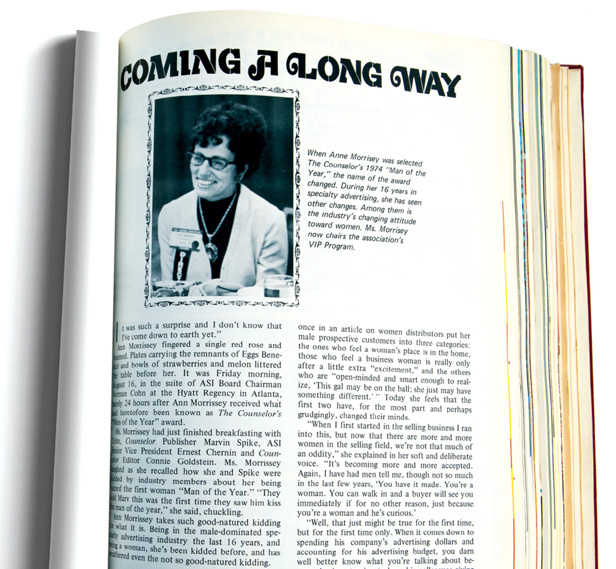
In a male-dominated industry, Morrisey was a barrier-breaker – successful in sales, active on industry committees and consistently vocal on key topics such as professionalization and training. Promo today is made up of roughly 55% women, and Morrisey’s groundbreaking recognition as Counselor’s “Man of the Year” (as the award was called then) was a nitro boost for gender equity and female empowerment within the industry.
< >19. Apple debuts the iPhone (2007)

Consider this – how much of your business is conducted through the device that’s probably in your hands or pocket right now? Yes, the internet was around when Apple released its seminal iPhone, but the power of this pocket computer transformed how we connect with each other, and truly allowed promo companies to conduct business anytime, anywhere.
< >18. Private equity enters the industry (1999-2003)
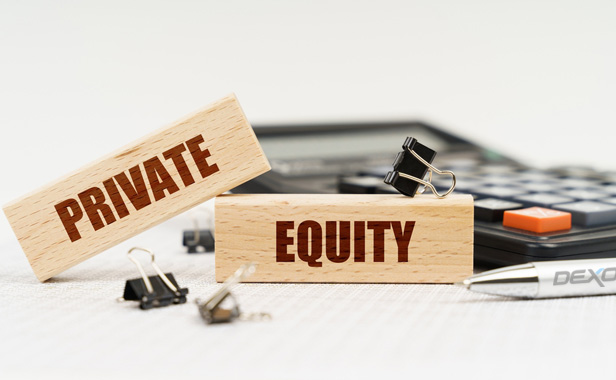
Many of the largest suppliers and distributors in promo today are owned by private equity firms, and it’s no secret who’s responsible for the accelerated pace of industry consolidation. Some of the earliest private equity deals – BankBoston and Black Diamond Capital’s investment in Leed’s (PCNA, asi/66887), Bain Capital’s acquisition of Broder Bros. (now known as alphabroder asi/34063), HALO (asi/356000) being sold to H.I.G. Capital – have definitively shaped today’s Top 40 and the future landscape of the industry.
< >17. Diners adopt Victor coffee mugs (1950s)
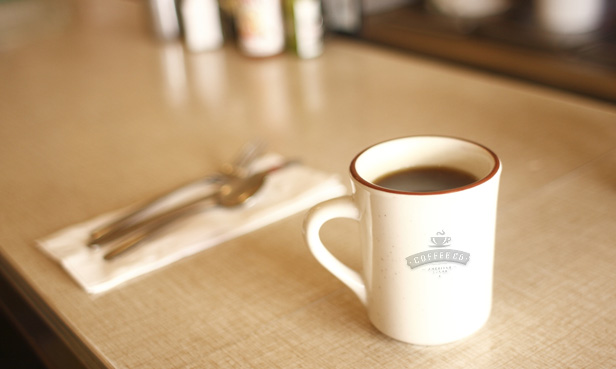
Like so many popular promo items, the ceramic coffee mug we all know and love got its start in World War II when Victor Insulators created porcelain mugs for U.S. naval vessels. The innovation caught on post-war and was a fixture at diners across the country during the mid-20th century. The products made the leap into people’s homes and offices, and is now a staple item of an industry where people sell “mugs and pens.”
< >16. Xerox releases the commercialized fax machine (1964)
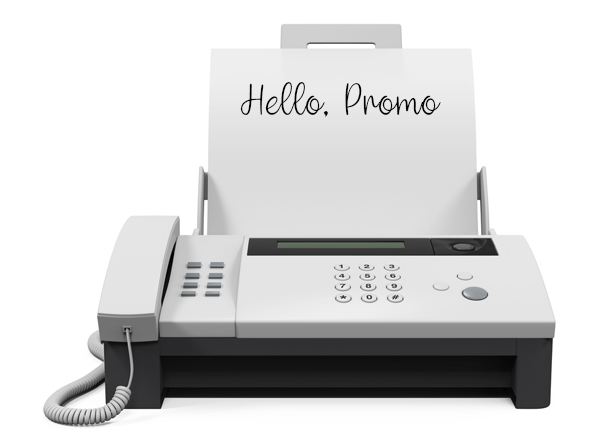
Though its heyday is long gone, the fax machine was a game-changer at the time for promo businesses. What used to take weeks to submit orders or mail proofs now could be accomplished in seconds. And though you may not believe it, the technology has its loyalists to this day – just ask the suppliers who still routinely receive distributor orders by fax.
< >15. Max Scharf purchases K-Studio (1969)
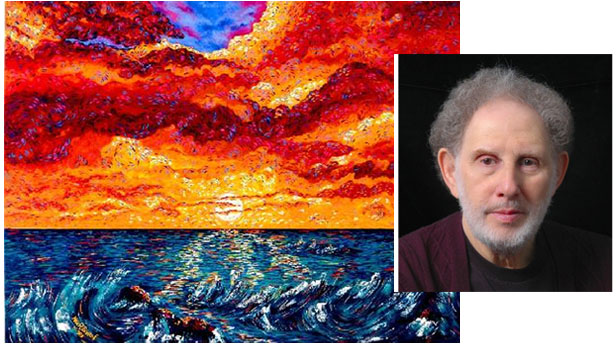
Simply put, apparel wouldn’t be where it is today – the #1 category in promo – without Max Scharf. Having started his own promo agency in the late ’60s, Scharf switched gears and purchased apparel company/screen printer K-Studio in 1969. The company was the first and foremost in bringing branded apparel to the market in the 1970s, and created the throughline that has led to today’s multibillion-dollar apparel suppliers. Scharf also was an accomplished artist (one of his paintings, Golden Horizon, is shown above) who was elected as a signature member of the National Oil and Acrylic Painters Society.
< >14. Microsoft acquires Hotmail (1997)
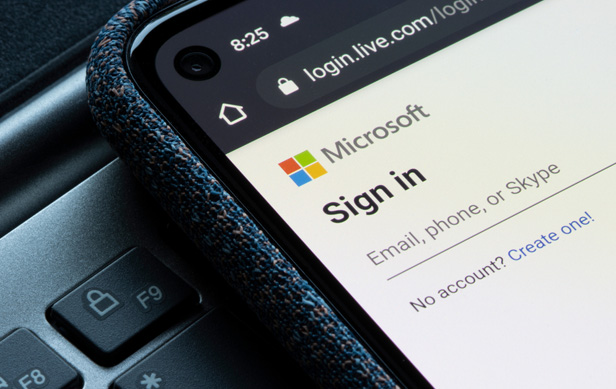
It’s not easy to pinpoint a single moment where email entered the mainstream. Maybe Tom Hanks and Meg Ryan in You’ve Got Mail? Microsoft’s acquisition of Hotmail for $500 million (the software company’s largest acquisition ever at the time) is just as good as any. By 1999, MSN Hotmail had become the dominant global provider of email, with 30 million users and a rate of 150,000 new users per day – a perch it and its successor (Outlook) wouldn’t relinquish to Gmail until 2012. More than just a casual tool to connect with friends, email became the critical vehicle for promo companies to communicate with customers, trade orders and proofs and market themselves.
< >13. Decoration advances enable mass production (1964 and 1967)
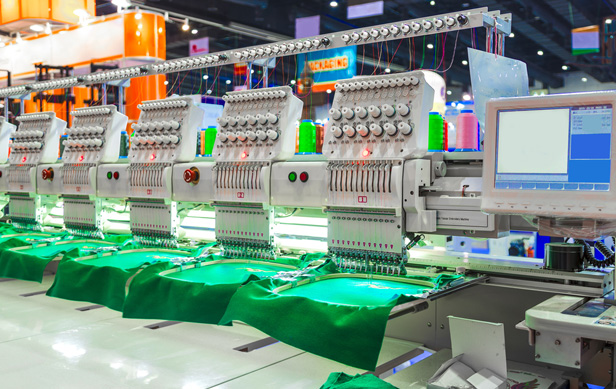
We say “promotional products,” but there’s an equally important word that goes unsaid: “decoration.” It doesn’t matter how many items you produce if putting a logo on them is slow and cumbersome. In 1964, Tajima started selling its multi-head automatic embroidery machines. Three years later, Mark Vasilantone invented and patented the Vastex dual rotary screen-printing press (where the pallets and print heads both rotate). The innovations enabled mass production of decorated items, and helped set the stage for apparel to become the dominant category it is today.
< >12. Amazon expands beyond books (1999)
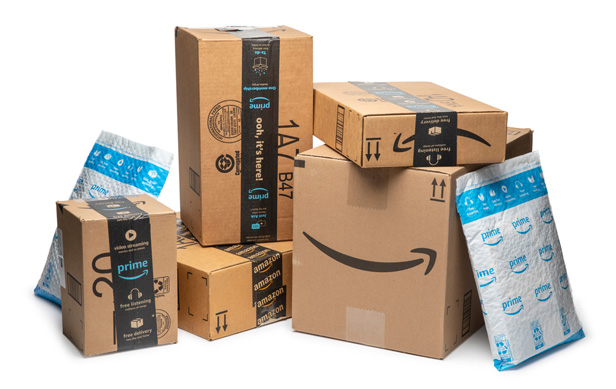
By 1999, the plucky online bookseller known as Amazon.com expanded beyond printed tomes into music CDs, toys and electronics. It shipped 20 million items that year and founder Jeff Bezos was named Time’s Person of the Year. That ambitious expansion has fundamentally shaped the modern shopping experience, and thrust both distributors and suppliers into an ever-quickening pace of fulfillment and customer response. That’s nothing to say of Amazon’s now calcified role as the industry boogeyman, whose mere presence and potential for disruption has long sent a shiver down the spines of promo executives.
< >11. Ballpoint pens enter the mainstream (1952-1954)
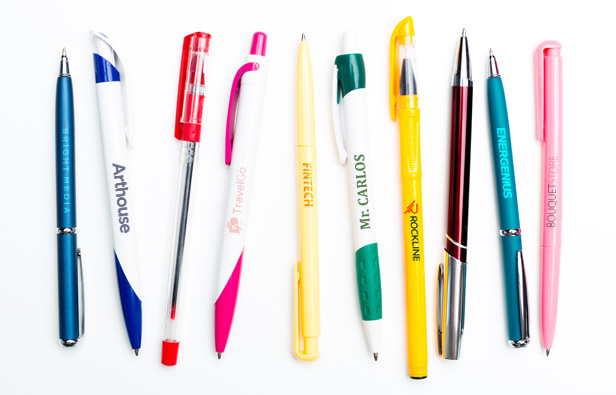
Laszlo Biro invented the modern ballpoint pen around World War II, but the pen’s skyrocketing popularity – and place as the most-searched product on ESP – can be traced to a series of events in the 1950s. In 1952, Marcel Bich bought a bombed-out factory in France to make his “Bic” pens. A year later, the Frawley Pen Company (now Paper Mate) launched a wildly successful ad campaign with stars of the day. In 1954, Parker Pen Company released its Jotter ballpoint – and was an instant success, selling millions.
< >10. Slack & Forrester create first industry Education Day (1976)
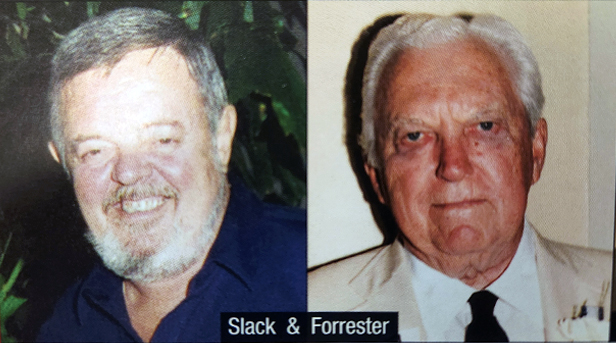
Theirs wasn’t the first industry educational seminar. But the first Education Day that was held at the 1976 SAAI ConExpo – hosted by promo stalwarts Steve Slack and W. Thomas Forrester and based on a feverish one-night (and early morning) brainstorming session by the duo – became the template for professional development that’s now a given for any industry trade show. For their critical efforts in raising the bar for the industry’s professionalism, Slack and Forrester were named Counselor’s 1977 Men of the Year.
< >9. The Great Recession leaves businesses reeling (2008)
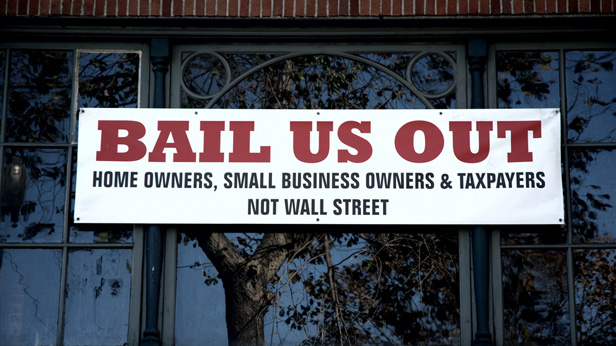
The worst recession of our lifetime taught business owners valuable lessons of diversification and running lean that they’ll carry for the rest of their careers. Beyond that, the events of 2008 have formatively shaped the values of the young millennials and Gen Z children who grew up during that time. This next-generation of business leaders is finely attuned to wealth disparity, environmentalism and the lack of guaranteed employment – philosophies that will shape the businesses of tomorrow.
< >8. IBM releases its personal computer (1981)
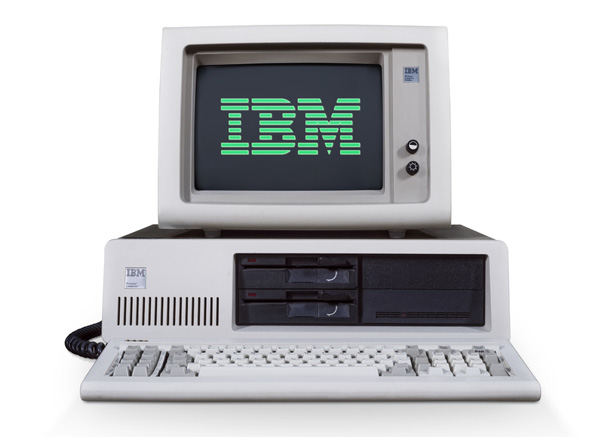
Computers had been around for decades, but their place was on college campuses and in the homes of only the most devout hobbyists. IBM’s release of its 5150 personal computer in 1981 featured two programs – one for spreadsheets and one for word processing – and was an immediate hit both with consumers and businesses. A year later Time named the PC its “Machine of the Year” (in lieu of its typical Person of the Year), and companies ever since have relied on computers to streamline operations and run practically every facet of their business.
< >7. China joins the WTO (2001)
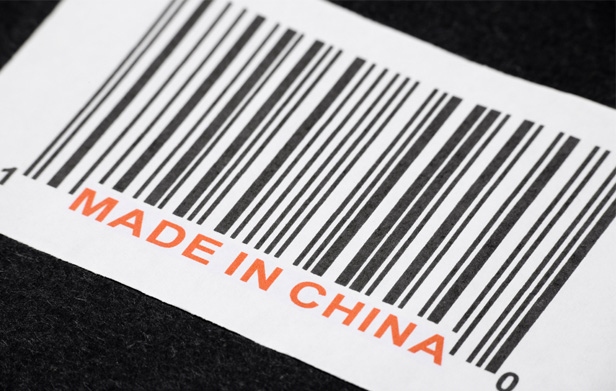
The decline of American manufacturing across all industries can be traced along many threads that go back decades. But once China joined the World Trade Organization in 2001, the door to overseas sourcing was thrown wide open. (It also, despite the U.S. government’s intentions, further strengthened China’s authoritarian regime, but that’s a discussion for another time.) That decade, America lost one-third of its manufacturing jobs. In the promo industry, suppliers accelerated their increasing reliance on sourcing products from overseas factories; in fact, today 85% of suppliers currently import products. The shift was so profound that Counselor named China its 2005 “Person” of the Year.
< >6. COVID-19 shuts down the world (2020)

Arguably the defining moment of the 21st century, the pandemic challenged every convention of daily living and running a business. Distributors and suppliers across the world demonstrated singular resilience in pivoting to product categories (PPE) they would never have considered and finding ways to survive (and even thrive) in the most difficult of business environments. While the immediate ripple effects of sourcing woes, labor challenges and price pressures are still being felt, the pandemic’s greatest legacy in promo will be the technological acceleration that companies embraced out of necessity.
< >5. ASI launches ESP (1989)

Online shopping and instant information are commonplace, but thousands of products at your fingertips was a novel concept 35 years ago when ASI launched ESP – an idea dreamed up by ASI Vice Chairman Matthew Cohn while he was still in college. The service, which was released on a CD-ROM, revolutionized the way distributors sourced products and found creative ideas, and established the conditions for today’s ultra-connected marketplace. Today, distributors can find over 1.2 million products from more than 3,000 suppliers in ESP+, the newest version of ESP that ASI released in 2023.
< >4. Ad specialty industry reaches $1 billion in sales (1972)
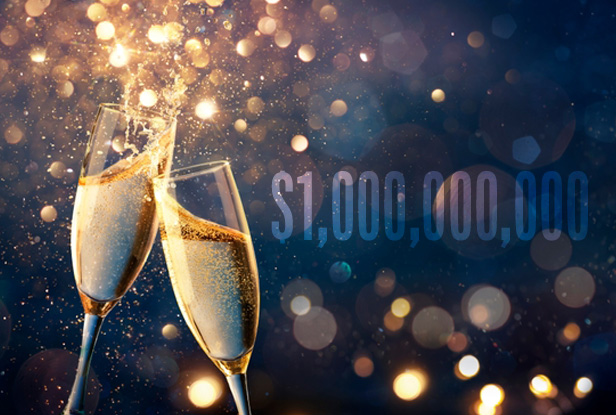
By the early 1970s, the industry had grown up and found its footing. It had widened beyond a few heritage companies into a more diverse ecosystem, and added a layer of professionalization and infrastructure that had previously been absent. That’s why the $1 billion mark was so important. It was definitive recognition that this once-nascent, hidden industry had officially made it … with the understanding that, with room still to grow, much bigger things lay ahead.
< >3. The Cohn family buys ASI (1962)
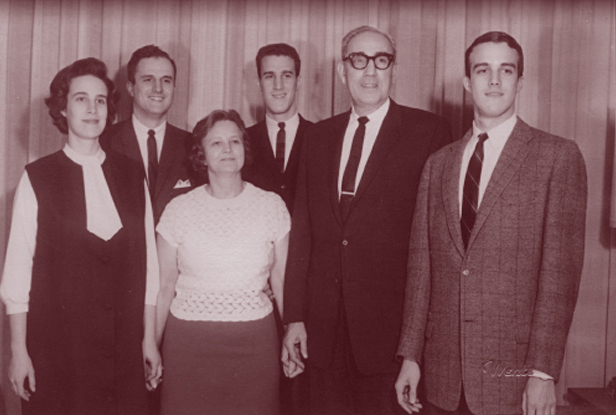
ASI founder Joe Segel was an idea man who shook up the industry, but he was also a serial entrepreneur who would go on to found more than 20 companies. His decision to sell ASI to the Cohn family turned out to be an absolutely crucial inflection point for the entirety of promotional products. Norman Cohn was a teenager when he first entered the promo industry, starting Santa Claus Industries in the basement of his parents’ Waterloo, IA, home. By the late 1950s, Cohn and his family bought up supplier companies and became the largest supplier in the industry – but they gave up all of that at Norman’s urging to purchase ASI in 1962. In the decades since, the Cohn family has brought vision and long-term stability, and it’s nearly impossible to properly explain Norman Cohn’s impact in turning the promotional products industry into the thriving $26 billion behemoth it is today.
< >2. The creation of the SAA (1964)

The 1950s were a time of great change in the promo industry. Not only had ASI founder Joe Segel launched his seminal Advertising Specialty Register, but he also started the Advertising Specialty Guild of America (known informally as the Guild), a new association that competed with the long-established Advertising Specialty National Association (ASNA). It was an old guard vs. new blood dynamic, and the two organizations forged ahead separately but on similar paths, to the point where they held trade shows in the same city on the same week. There was widespread recognition of the need for a single combined association, but consolidation efforts proved difficult. Discussions continued for years however, and persistence on both sides led to a monumental agreement in February 1964: the merging of the two organizations into the Specialty Advertising Association, or what’s known today as PPAI.
< >1. Joe Segel publishes the Advertising Specialty Register (1950)
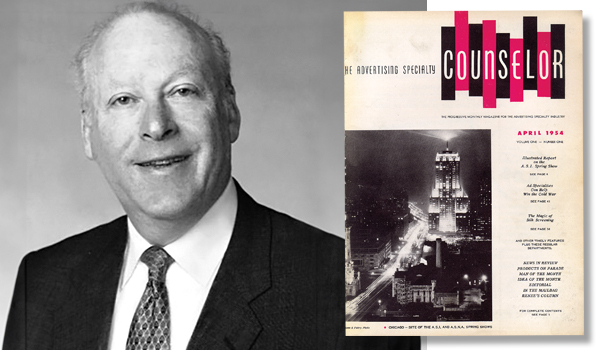
“By the end of World War II, the specialty advertising industry had become a closed society.” So we wrote in Making Our Mark, a special publication we published in 2000 celebrating ASI’s 50th anniversary and the history of the promotional products industry.
That doesn’t sound like the industry today, which features thousands of distributors and suppliers and is open to anyone with an entrepreneurial itch. But it was true back then. Suppliers had rigid requirements that limited who could sell their products, and it was extremely difficult for new “jobbers” (as distributors were then known) to break in.
Joe Segel changed that. A grad student and young entrepreneur who was looking to break into the ad specialty business, he raised money by tracking down the information of 2,000 industry companies, and then compiled it into what he called the Advertising Specialty Register. It was an instant hit, and Segel followed up in the next few years with a series of additional innovations, including the ASI number identification system that endures today and (of course) the launch of The Counselor in 1954.
“An informed businessman is a better businessman” was the stated philosophy of Segel and ASI in the early years of the company. By democratizing the flow of information and opening the doors of this small-but-growing profession to newcomers, Segel helped lay the foundation on which the full breadth of the promotional products industry sits today.
<